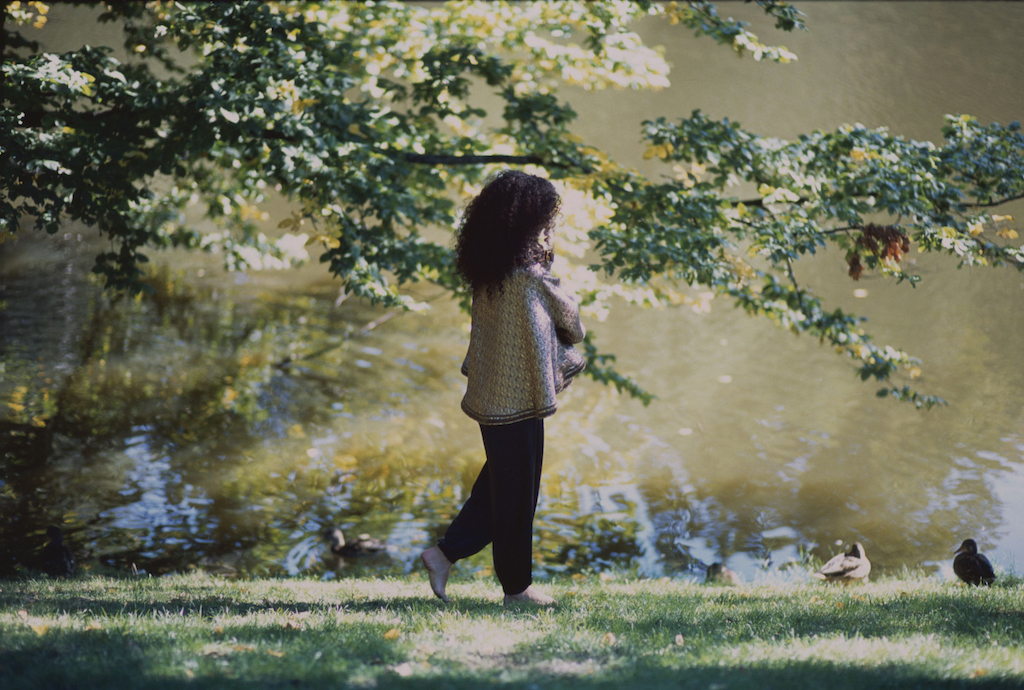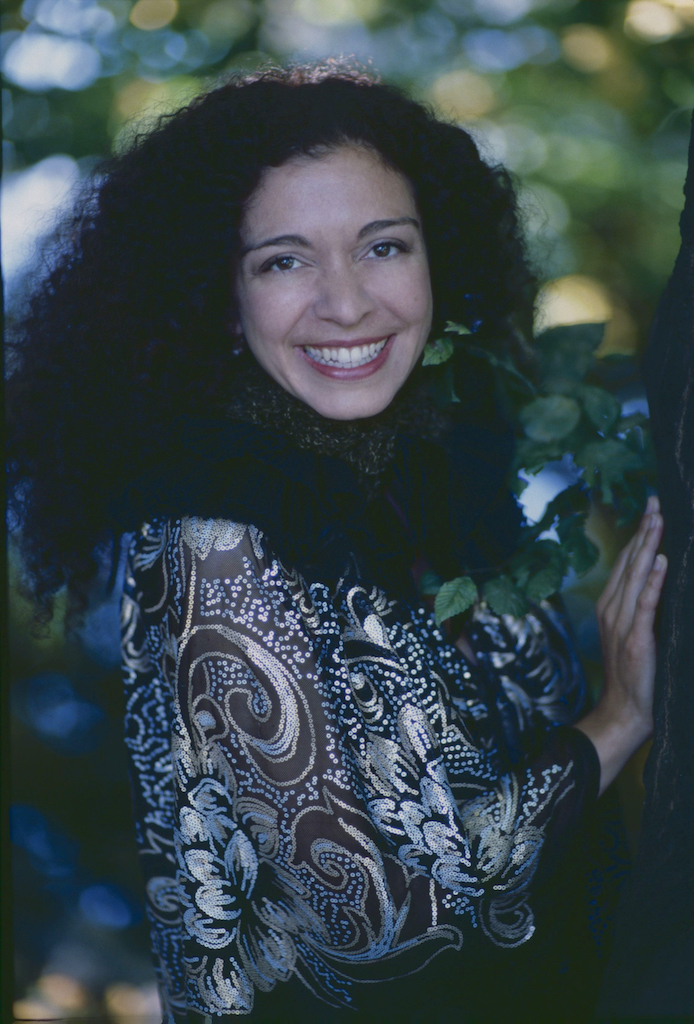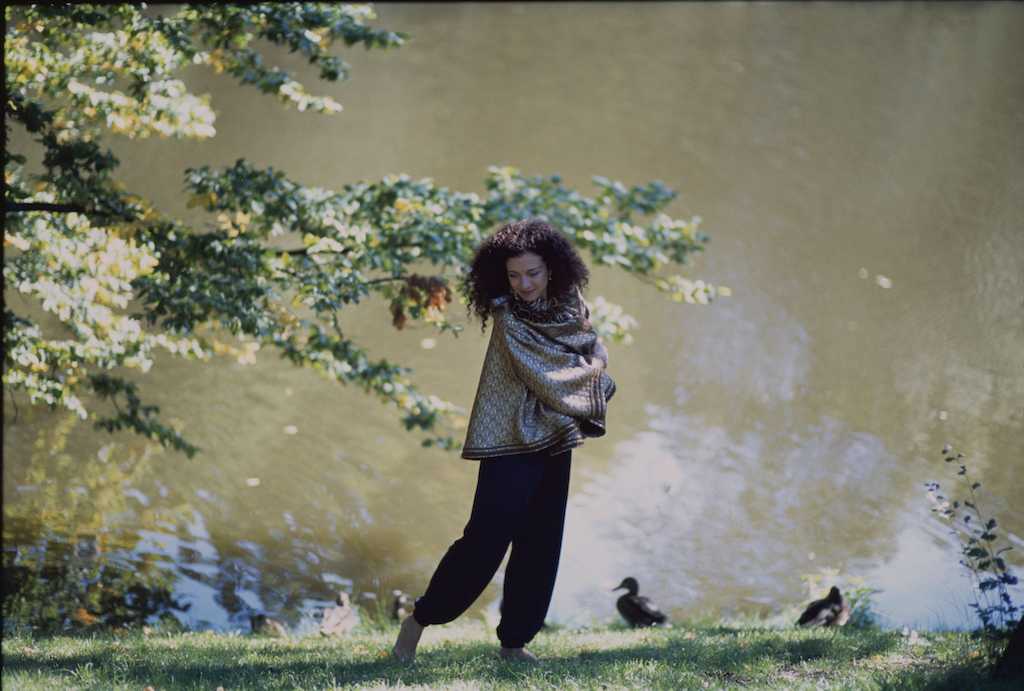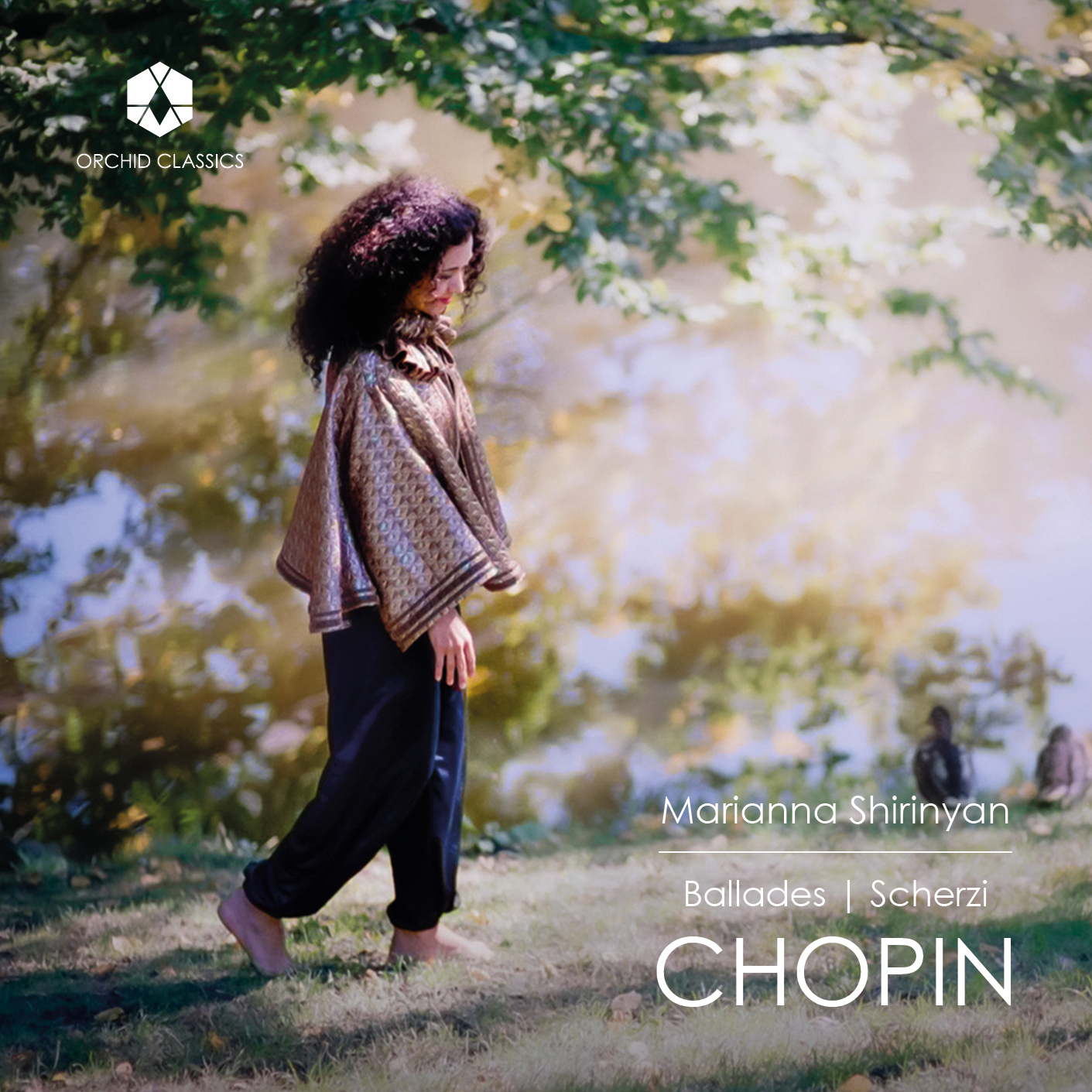Renowned Armenian-born pianist Marianna Shirinyan performs some of Chopin’s most fascinating and fiendish pieces: the four Ballades and four Scherzos.



Dedicated to Margarita Hakobyan,
my first piano teacher
CHOPIN: Ballades & Scherzi
Frédéric Chopin (1810-1849)
1. Ballade No.1 in G Minor, Op.23
2. Ballade No.2 in F Major, Op.38
3. Ballade No.3 in A flat Major, Op.47
4. Ballade No.4 in F Minor, Op.52
5. Scherzo No.1 in B Minor, Op.20
6. Scherzo No.2 in B flat Minor Op.31
7. Scherzo No.3 in C sharp Minor, Op.39
8. Scherzo No.4 in E Major, Op.54
Marianna Shirinyan, piano
Chopin’s relationship with musical precedent was a curious one, characterised by his inventive nature: on the one hand, he pioneered new forms as a framework for his ideas, and on the other, he took existing forms in new directions while retaining a deep respect for classical conventions. So it was that alongside developing genres such as the ballade, nocturne, mazurka and polonaise, Chopin took the scherzo – which in the hands of Beethoven and Mendelssohn usually exhibited quite specific characteristics of energy or levity – and fashioned it into something formidably dramatic and distinctively his own. As François Fétis, a Revue Musicale critic, put it:
‘Here is a young man who, surrendering himself to his natural impressions and taking no model, has found, if not a complete renewal of piano music, at least a part of that which we have long sought in vain, namely an abundance of original ideas of a kind to be found nowhere else … I find in M. Chopin’s inspirations the signs of a renewal of forms which may henceforth exercise a considerable influence upon this branch of the art.’
Such innovations were achieved with remarkable understatement; Chopin was not temperamentally ‘showy’, and his rather ethereal bearing, partly caused by ongoing tuberculosis, cut a Romantic figure at a time when the idealised view of the artist as a poetic, otherworldly being was gaining momentum. In contrast with the pyrotechnics of Liszt’s virtuoso pianism or Berlioz’s orchestral innovations, Chopin favoured the delicacy of the square piano, and he also preferred Mozart to Beethoven, arguing that the latter’s music was ‘obscure and seems lacking in unity… the reason is that he turns his back on eternal principles; Mozart never’.
These ‘eternal principles’ guided Chopin’s approach even as he broke new ground, so that he retained structural and harmonic cohesion as the foundation for his more daring ideas. Even so, the apparently innocuous title of ‘Scherzo’ could easily lull the listener into a false sense of security as to what to expect. The first three of Chopin’s four Scherzos are frequently fiery and dissonant; all four are exceptionally challenging for the pianist. The Scherzo No.1 in B minor, Op.20 (1831-35) was composed at a time when many of Chopin’s friends were away with the Polish army; Chopin was flagging after writing several larger scale works, but continued to compose solo piano music. The piece is sometimes dubbed ‘The Infernal Banquet’ owing to its fiendish character, which is juxtaposed with a central lullaby based on the Polish carol ‘Sleep, little Jesus’.
Robert Schumann regarded Chopin’s Scherzo No.2 in B flat minor, Op.31 (1837) as Byronic in the grandeur of its passion, and Chopin was insistent that the ominous opening triplets must be as ghostly as possible. According to his pupil Wilhelm von Lenz: ‘For Chopin it was never questioning enough, never soft enough… It must be a charnel-house’ – in other words, as quiet as a vault. Even so, there are strong dynamic contrasts throughout, and the searching opening dialogue evolves into a long-breathed melody before an economical central trio that grows into urgently virtuosic material. The opening ideas are reprised almost exactly but with touches of decoration, before the various elements are drawn together in a thrilling coda.
The Scherzo No.3 in C sharp minor, Op.39 (1839) is also remarkably dissonant, and begins with starkly arresting octaves. The main material was apparently inspired by one of Chopin’s students, the work’s dedicatee Adolphe Gutmann – who was strong enough to punch a hole in a table. Again, Chopin provides striking contrast in the form of an almost Wagnerian chorale and its waterfall-like descending stream of notes in reply. The piece was begun in 1838 while Chopin and his partner George Sand (pseudonym of Amandine-Aurore-Lucile Dupin) were staying in the abandoned monastery at Valldemossa on Mallorca, and the chorale – which undergoes a magnificent transformation in the coda – may have been inspired by the liturgical music that would once have echoed arounds its walls, or by one of the Bach scores in which Chopin was immersed at the time. Chopin wrote that: ‘Next to my bed there is a hopeless square desk I can hardly write on … my Bach, my own scrawls, someone else’s papers… silence’. In January 1839 Chopin and Sand took delivery of a Pleyel piano which, along with the emergence of Mallorcan spring weather in the weeks that followed, enabled Chopin to work productively on a number of pieces, including this Scherzo.
Written while Chopin was at Sand’s country retreat in Nohant in central France, in the company of guests such as Delacroix, Chopin’s Scherzo No.4 in E major (1842) is the only one of the four in a major key. Yet its relatively serene nature, with fluid, whimsical twists and turns, also makes this Scherzo one of the most demanding to play. The opening passages have few metrical anchor-points, creating a free but rather skittish character – fitting for a scherzo, but potentially unwieldy, too. Saint-Saëns preferred this Scherzo to the others, and both he and Pierné referred to the piece in their piano concertos in G minor and C minor respectively. The central section is more introspective and lyrical, with less pronounced syncopation, but the coda reinforces the piece’s high spirits.
While the pre-existing scherzo was a suitable vehicle for Chopin at his most dazzling, his more poetic side demanded the creation of an original form: the ballade. Chopin coined the title, harking back to romanticised figures of medieval minstrels singing poetic ballads. Each of the four Ballades is quite different in character, but they share particular metrical and structural features, as well as the Romantic spirit suggested by the title.
The Ballade No.1 in G minor, Op.23, immediately establishes this bardic quality during its mysterious, suspenseful introduction – rather like a Shakespearean prologue – before unfolding in as a series of contrasting, often ardent episodes. The exact composition date is uncertain; sketches date back to Chopin’s stay in Vienna during 1831, and it may have been that when he was busy teaching in Paris in 1835 he excavated the piece and set to work polishing it. Yet its stylistic features have stoked the opinion that much of the Ballade was composed in 1834-5, and it was certainly completed in 1835 in Paris. Robert Schumann said that ‘my joy was great’ when Chopin presented him with a copy, writing in 1836: ‘I have a new Ballade by Chopin. It seems to me to be the work closest to his genius (though not the most brilliant). I even told him that it is my favourite of all of all his works. After a long, reflective pause he told me emphatically: “I am glad, because I too like it the best, it is my dearest work.”’
Schumann was the dedicatee of the Ballade No.2 in F, Op.38. Chopin began work on the piece in 1836 while staying at Nohant, completing it two or three years later in Valldemossa. The works is characterised by dramatic contrasts, from the tender, hushed opening refrain to passages of scintillating virtuosity. Structurally, the Ballade No. 2 combines elements of both nocturne and étude, and its modulations are so outlandish that Busoni – one of many critics of the piece, including Schumann himself – thought it ‘badly composed’.
Schumann was more encouraging about the Ballade No.3 in A flat, Op.47, describing it as ‘most original’. Chopin’s output between 1838 and 1841 had been relatively scant, preoccupied as he was with studying counterpoint and re-evaluating his compositional approach. He continued to find solace in his stays at Nohant, where he completed the Ballade No.3 in the summer of 1841. George Sand wrote to Delacroix at this time that Chopin was working on ‘quite a little baggage of new compositions, saying, as usual that he cannot seem to write anything that isn’t detestable and miserable… the funniest thing is that he says this in perfectly good faith!’ Indeed, this was not false modesty; Chopin referred to this Ballade and other compositions of this time as mere ‘cobwebs and manuscriptorial flies’ and apologised to his publisher, Fontana, lamenting that ‘the weather is beautiful and my music horrible’.
Even so, all the joy of the French countryside emanates from the Ballade No.3, with darker episodes only briefly clouding the sunshine. The piece was probably first performed at a concert with the singer-composer Pauline Viardot at Pleyel’s salon in February 1842, an occasion described in La France musicale as ‘a charming soirée, a feast peopled with delicious smiles, delicate and pretty faces, small, shapely white hands; a magnificent occasion where simplicity was married to grace and elegance’. Dedicated to the Baroness Charlotte de Rothschild, the Ballade No.4 in F minor, Op.52, also dates from 1842 and is one of Chopin’s finest achievements, its poetic lyricism and subtle harmonies echoing the words of the same review: ‘… good taste served as a pedestal to riches…’
© Joanna Wyld, 2023
Renowned Armenian-born pianist Marianna Shirinyan performs some of Chopin’s most fascinating and fiendish pieces: the four Ballades and four Scherzos. Chopin coined the term ‘ballade’, harking back to medieval minstrels singing poetic ballads. His four Ballades are quite different in character, but share a sense of Romantic story-telling in their dramatic contrasts and virtuoso display. The first three of Chopin’s four Scherzos are fiery and dissonant; all four are exceptionally challenging. The Scherzo No. 1 is sometimes dubbed ‘The Infernal Banquet’ owing to its devilish character, which is juxtaposed with a central lullaby based on the Polish carol ‘Sleep, little Jesus’. Schumann regarded Chopin’s Scherzo No. 2 as Byronic in the grandeur of its passion, and the Scherzo No. 3 is also remarkably daring, with an almost Wagnerian chorale. Chopin’s Scherzo No. 4 is the only one in a major key, yet its relatively serene nature, with fluid, whimsical twists and turns, also makes it one of the most demanding to play.
Marianna Shirinyan
Piano
Renowned Armenian-born pianist Marianna Shirinyan is one of the most creative and sought after pianists in Europe today. Her vibrant and virtuoso musicianship puts her in demand, both as a soloist and as a chamber musician. Marianna plays with great sensitivity, understanding, technical brilliance and beauty of tone, which allows her to offer a wide range of repertoire. Her love for the music and joy in sharing it with a larger audience are apparent in her performances.
Marianna has received numerous awards throughout her career, such as the Danish broadcasting Corporation’s P2 award for her contribution to Danish music life, the critic’s prize from the association of Danish critics and just recently the Honorary Carl Nielsen Award.
Marianna has garnered reputation as a leading pianist of her generation through solo appearances and long term collaborations with renowned orchestras and conductors as well as regular appearances at string of international music festivals as a recitalist and chamber musician.
In addition to her work as a performer, Marianna is also a professor for piano at the Royal Danish Academy of Music, where she has inspired many young pianists to follow in her footsteps.
Marianna is a Steinway artist.
Read more about Marianna at: www.mariannashirinyan.com

Click the button above to download all album assets.

